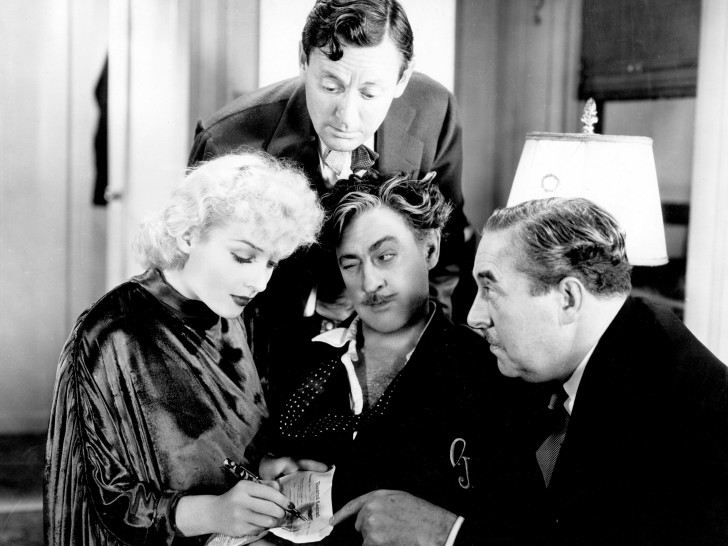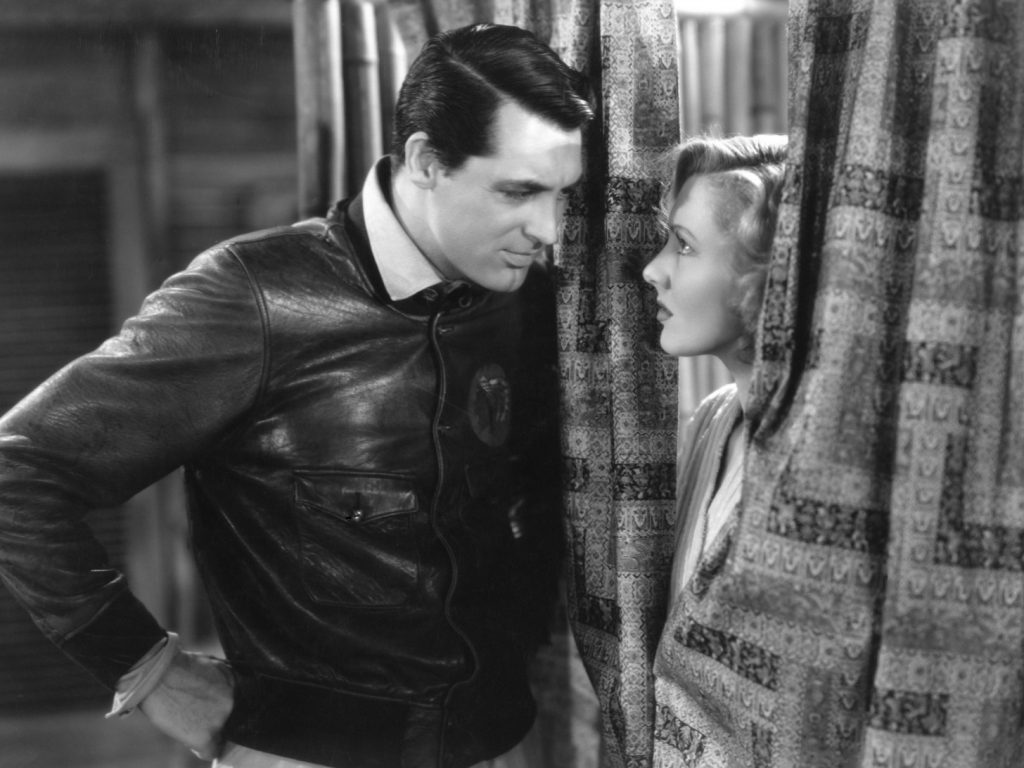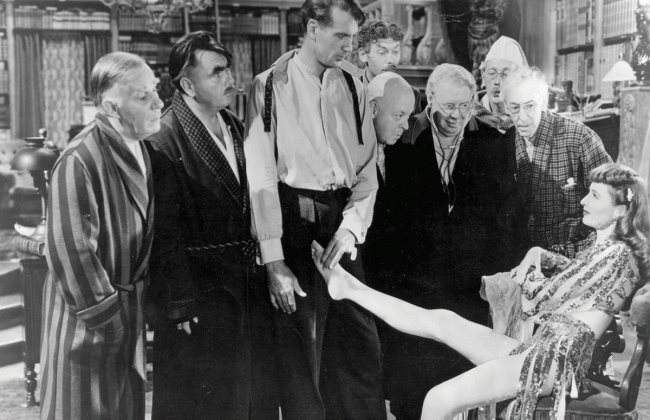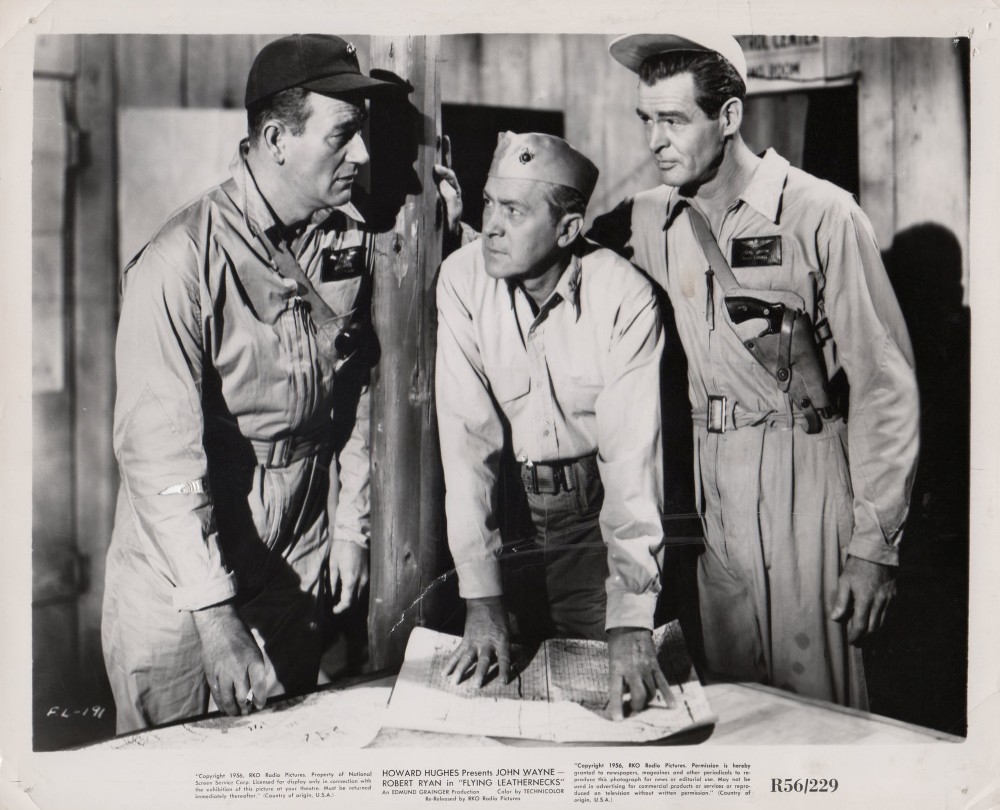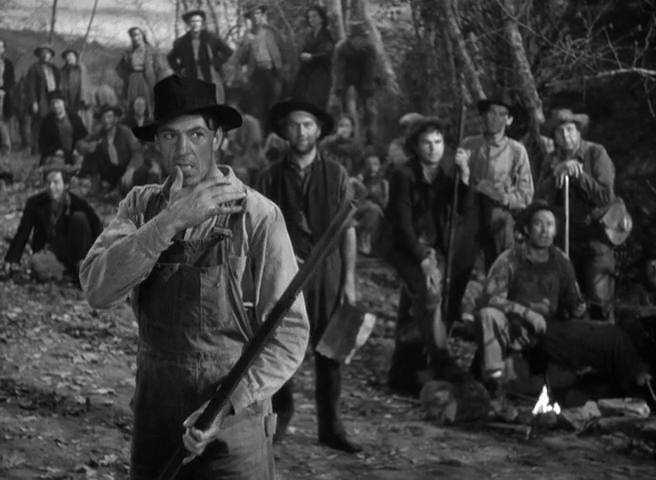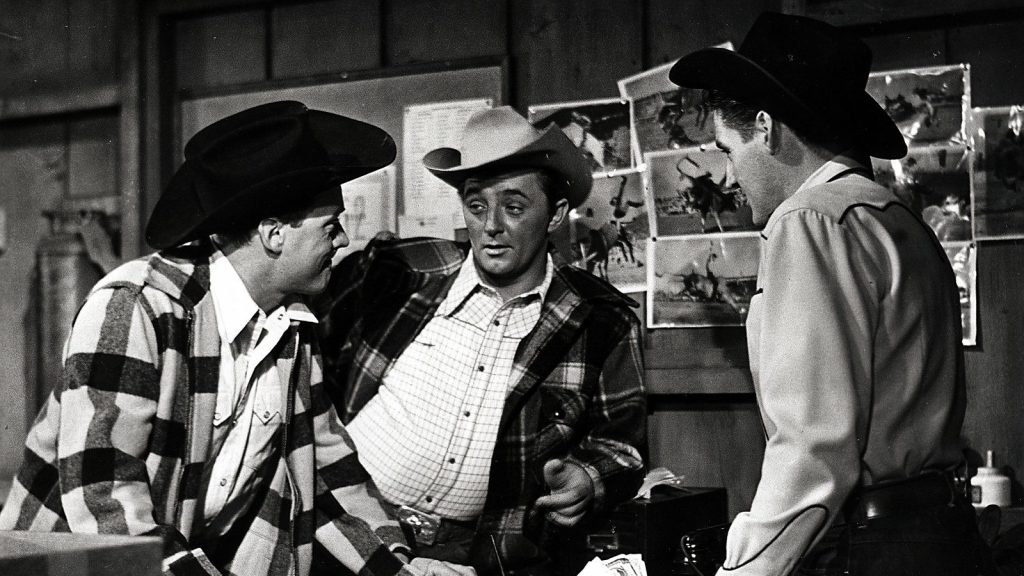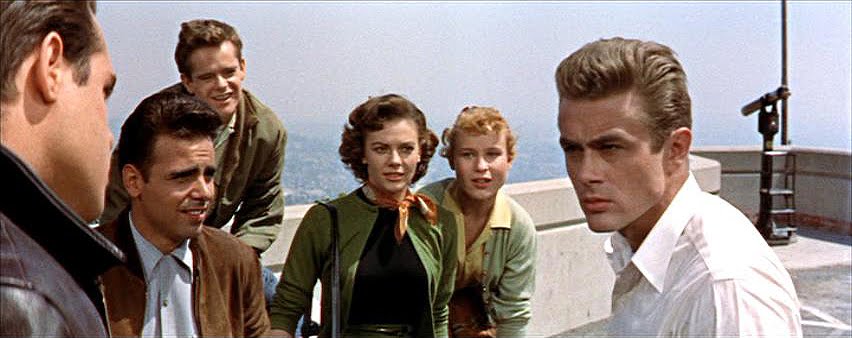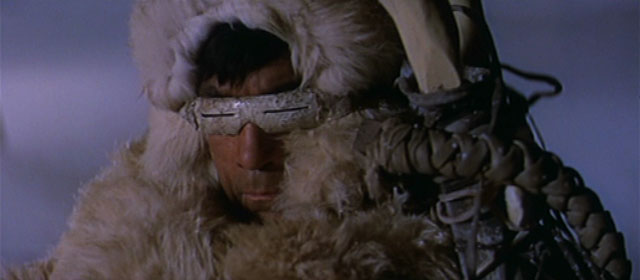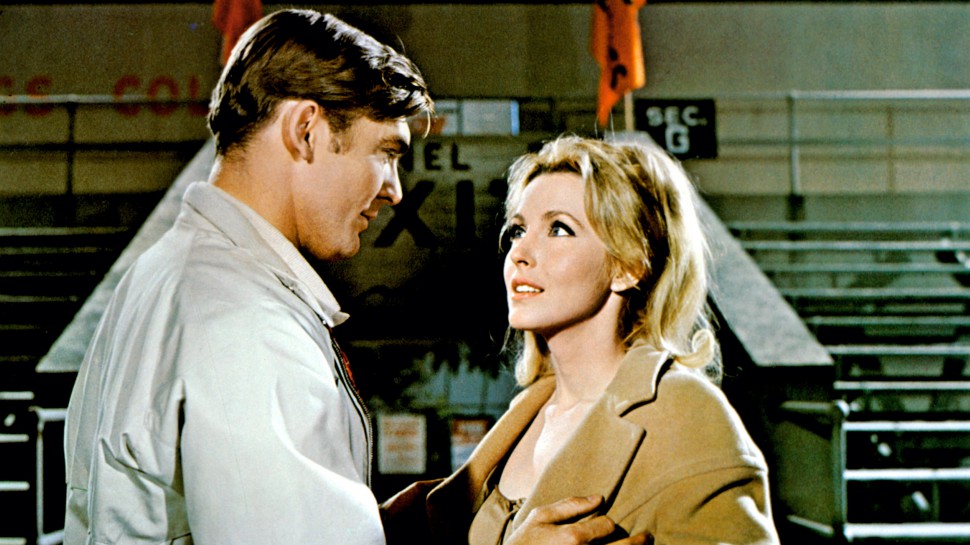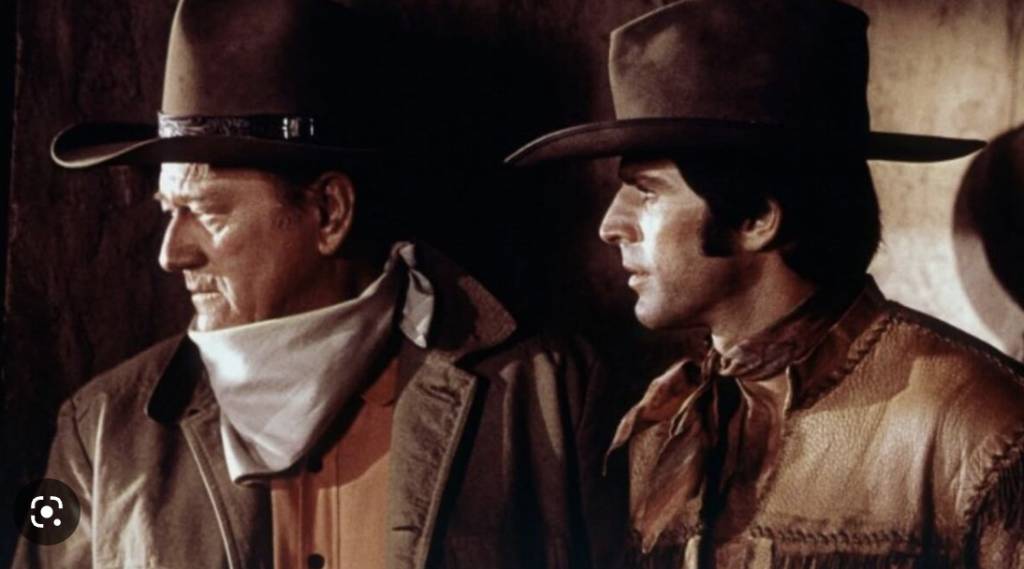Friday, January 20 at 1pm
TWENTIETH CENTURY
Directed by Howard Hawks (U.S. 1934) 91 min. 35MM. With John Barrymore, Carole Lombard, Walter Connolly.
John Barrymore and Carole Lombard form a whirlwind duo as illustrious theater director Oscar Jaffe and his prized star Lily Garland in this genre-straddling Broadway portrait, a film that turns on a dime from flamboyant hysterics to weepy pathos on more than one occasion. Beginning in the spacious auditoriums and dressing rooms of Broadway and eventually moving to the stifling cabins of the titular Chicago-to-New York commuter train, Twentieth Century paints a vivid portrait of the simultaneously toxic and symbiotic relationships between the men and women of this tight-knit theatrical community, which is held together and lorded over by the autocratic Jaffe. When Garland, sick and tired of her cloying director, ditches the troupe for a rapidly successful career as a Hollywood starlet, however, everything comes undone for Jaffe—that is, until a chance encounter with Garland onboard the Twentieth Century train provides him a legacy-defining opportunity to reacquaint with his lost muse. Hijinks ensue, though for all the fast-flowing, hysterically delivered Ben Hecht dialogue, Hawks maintains an emphasis on the sorrow and tragedy of a vulnerable man realizing too late that his moment has passed. (Harvard Film Archive notes).
ONLY ANGELS HAVE WINGS
Directed by Howard Hawks (U.S. 1939) 121 min. DCP. With Cary Grant, Jean Arthur, Richard Barthelmess.
Jollity and death exist on a precarious seesaw throughout Only Angels Have Wings, a quintessential mid-career Hawks film about male commercial pilots operating in a remote alpine outpost in South America. Two worlds govern the film: there is the idyllic flying station, a bunkhouse-cum-saloon where the men carouse in between missions, and then there is the treacherous route through the mountains, where storm clouds constantly circle and planes go to die. Hawks delineates both masterfully through sound design, favoring brisk overlapping banter and near-constant barroom music in the station while letting the nerve-wracking drone of wind, rain and plane engines dominate the missions—a soundscape that gradually intrudes on the merriment as the film presses on. Geoff (Grant) is the headstrong leader of the ever-dwindling crew, a stoic man who has learned to accept death with a straight face and an ace pilot who volunteers for the most dangerous trips himself. Still, what unites these daredevils is a passion for their death-defying craft, and much of the film revels in the pockets of joy found amidst lingering grief (Harvard Film Archive notes).
I Was a Male War Bride
Directed by Howard Hawks (U.S. 1949) 105 min. DCP. With Cary Grant, Ann Sheridan.
Captain Henri Rochard (Grant) is a French officer assigned to work with American Lieut. Catherine Gates (Sheridan). Through a wacky series of misadventures, they fall in love and marry. When the war ends and Catherine’s army unit gets recalled back to the United States, the only way she and Henri can stay together is by invoking a law allowing the spouse of American army personnel to enter the country. The sight of Grant in a military-issue skirt and a horsetail wig is among the highlights of this zany gender reversal farce, one of Hawks’s personal favorites (Museum of the Moving Image notes).
TOP OF PAGE
Friday, February 10 at 1pm
THEY LIVE BY NIGHT
Directed by Nicholas Ray (U.S. 1941) 95 min. With Cathy O’Donnell, Farley Granger, Howard Da Silva.
Legendary director Nicholas Ray began his career with this lyrical film noir, the first in a series of existential genre films overflowing with sympathy for America’s outcasts and underdogs. When the wide-eyed fugitive Bowie (Granger), having broken out of prison with some bank robbers, meets the innocent Keechie (O’Donnell), each recognizes something in the other that no one else ever has. The young lovers envision a new, decent life together, but as they flee the cops and contend with Bowie’s fellow outlaws, who aren’t about to let him go straight, they realize there’s nowhere left to run. Ray brought an outsider’s sensibility honed in the theater to this debut, using revolutionary camera techniques and naturalistic performances to craft a profoundly romantic crime drama that paved the way for decades of lovers-on-the-run thrillers to come.
“The most romantic and haunting young-criminal-lovers-on-the-run movie ever made.” – Jim Jarmusch
Friday, February 17 at 1pm
Ball of Fire
Directed by Howard Hawks (U.S. 1941) 111 min. 35MM. Gary Cooper, Barbara Stanwyck, Oskar Homolka.
Within the wooded walls and fusty halls of the home graciously provided them by the Totten Foundation live and work eight mossy professors, researching and “updating” an encyclopedia that becomes obsolete faster than the doddering pedants can down their morning prunes. Among them, Professor Potts (Cooper) stands out as the youngest, all the more priggish for his youth. At S for Slang, a field trip turns up a gold mine of information in the form of Sugarpuss O’Shea (Stanwyck), a nightclub singer and gangster’s moll whom the gentlemen adopt as their own Snow White. The sparks that this long-legged ball of fire lights under Cooper’s hilariously demure Potts make for a belated coming of age. The script was written by Billy Wilder and Charles Brackett, but as Andrew Sarris put it, “The regression of intellectual man to the level of caveman is accomplished here in the fast raucous style which is invariably the Hawksian trademark” (Judy Bloch, Pacific Film Archive). 35mm preservation print courtesy of the UCLA Film & Television Archive.
TOP OF PAGE
Friday, February 24 at 1pm
Flying Leathernecks
Directed by Nicholas Ray (U.S. 1951) 102 min. 35MM. With John Wayne, Robert Ryan, Don Taylor.
Under contract to Howard Hughes at RKO, Ray was assigned to direct a film celebrating the glories of aviation and the U.S. Air Force, a directive he fulfilled by seamlessly blending staged flying sequences with documentary footage of WWII aerial combat from the military archives. In his first Technicolor film, Ray demonstrates a striking mastery of the technology, favoring a subtle, muted color scheme to complement the film’s somber tone. Starring Ray’s friend and frequent collaborator Robert Ryan as a WWII-era Marine flyer who clashes with his superior officer, played by an ornery John Wayne, Flying Leathernecks hints at the critique of machismo bravura offered by his later films, with its close-up look at the difficult decisions faced by superior officers when they must send their men off to battle (Harvard Film Archive notes).
Friday, March 3 at 1pm
Sergeant York
Directed by Howard Hawks (U.S. 1941) 95 min. 35MM. With Gary Cooper, Walter Brennan, Joan Leslie.
Hawks’ highest-grossing success, and his only film to earn him a nomination from the Academy, was this rousing coming-of-age drama about decorated US Army Lieutenant Alvin York, a real-life figure whose path from juvenile delinquency to national heroism was tailor-made for the screen. As portrayed by Gary Cooper, York is an irresponsible rube from the backwoods of Tennessee who nevertheless emanates fundamental decency, making his eventual, belated embrace of Catholicism, spurred on by the local pastor (Brennan), feel like a natural outgrowth of his character. Internal dilemmas arise when the draft comes knocking, but York, after much deliberation, accepts military service as the moral path and goes on to lead in the historic capture of over one hundred enemy soldiers. In the dark years of WWII, Sergeant York’s earnest portrait of rural Americana, deep Christian faith, and rousing nationalism proved a winning formula, making it one of the era’s critical pieces of war propaganda in spite of how little combat it actually dramatizes. The bulk of the film’s narrative is instead concentrated around Tennessee, an idyllic swath of heartland recreated in the studio with remarkable painted backdrops and carefully weathered props, all of which enable Hawks to indulge a pictorialism unique to his filmography (Harvard Film Archive notes). Preserved by the Library of Congress
Friday, March 10 at 1pm
The Lusty Men
Directed by Nicholas Ray (U.S. 1952) 113 min. 35MM. With Susan Hayward, Robert Mitchum, Arthur Kennedy.
“The kind of love I have for the film,” said Nicholas Ray of The Lusty Men, “is not as a filmmaker adoring a child, it’s as a part of the literature of America.” Set in the punishing, rootless world of the rodeo circuit, this is one of Ray’s very best films, and Robert Mitchum’s Jeff McCloud is its sad, busted, but still beating heart. According to Lee Server’s biography of the actor, Mitchum was so excited by his work in the film (in which he did many of his own stunts) that he went out with his director to celebrate, got drunk, appropriated a gun from an FBI agent, and fired it into a stack of dishes (Film at Lincoln Center notes). Restored by Warner Bros. in collaboration with The Film Foundation and The Nicholas Ray Foundation. Print courtesy of The Film Foundation Conservation Collection at the Academy Film Archive.
Rebel Without a Cause
Directed by Nicholas Ray (U.S. 1955) 111 min. 35MM. With James Dean, Natalie Wood, Sal Mineo.
Released just one month after James Dean’s death, Rebel Without a Cause captured the magnetic on-screen presence of the young actor and the feverish anxiety of an entire generation. Coming together at a police station, conflicted teenage outcasts Jim Stark (Dean), Judy (Wood), and Plato (Mineo) face down their nagging parents and live up to the challenge of the local hotshots by playing chicken at a seaside cliff. Ray’s memorable look at nonconformity remains the standard for youth angst on film: a biting critique of middle-class institutions highlighted by great performances, Ernest Haller’s low-key lighting and Leonard Rosenman’s groundbreaking score (Lincoln Center Program Notes).
Friday, March 31 at 1pm
The Savage Innocents
Directed by Nicholas Ray (France/Italy/UK 1960) 110 min. With Anthony Quinn, Yoko Tani, Peter O’Toole.
Ray’s lifelong interest in isolated cultures – gypsies in Hot Blood, the Deep South in Wind in the Everglades – informs every frame of this fascinating late film about an Inuit hunter, robustly played by Anthony Quinn, who runs afoul of the laws imposed upon his Arctic homeland by the white settlers. Assigned to bring him to justice is a naïve lawman, played by Peter O’Toole in an early screen appearance, who is pulled dangerously deep into the Arctic winter. A return to Ray’s perennial theme of a search for home, The Savage Innocents was shot in CinemaScope on location in Northern Canada, using the immense emptiness of the landscape to emphasize the harshness of the environment and the ultimately insurmountable difference between the two distant cultures (Harvard Film Archive Program Notes).
Friday, April 7 at 1pm
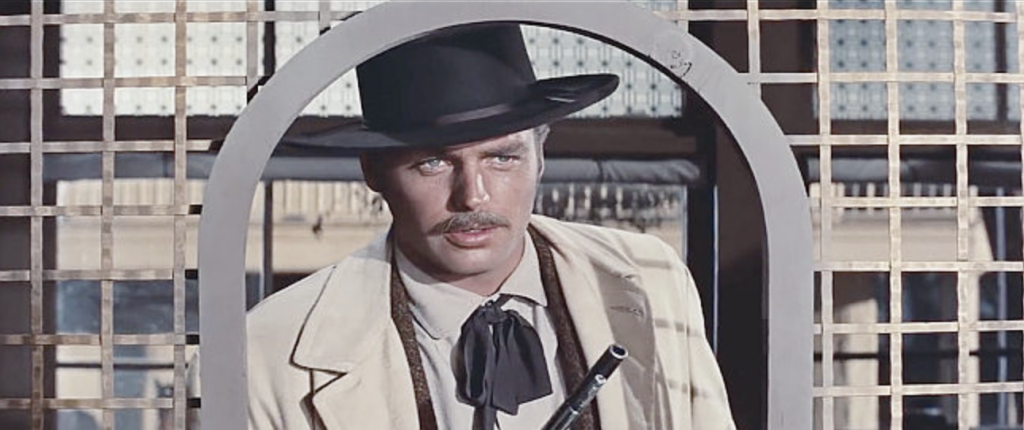
The True Story of Jesse James
Directed by Nicholas Ray (U.S. 1957 ) 92 min. 35MM. With Robert Wagner, Jeffrey Hunter, Hope Lange.
The bullets fly as James Brothers (Robert Wagner’s Jesse and Jeffrey Hunter’s Frank) and their gang run into surprising resistance from the irate citizens of Northfield, Minnesota– and then flashbacks begin, in a ballad-like portrait of a man who falls in love with his own legend (Film Forum notes). Print courtesy of the George Eastman Museum, lent by an anonymous collector.
“Another of Ray’s hurt heroes– confused, conflicted, contradictory, echoing Rebel Without a Cause.” – James Quandt
Friday, April 21 at 1pm
Red Line 7000
Directed by Howard Hawks (U.S. 1965) 110 min. 35MM. With James Caan, Laura Devon, Gail Hire.
Red Line 7000 finds Hawks returning to the stock-car racing milieu of his earlier The Crowd Roars with a larger cast and an even more dizzying sense of peril. Making spectacular use of several famous North Carolina NASCAR tracks (Daytona, Charlotte and Darlington Speedways), the film spends much of its nearly two-hour runtime on lengthy race sequences that alternate among the drivers, the crowd, the announcers and the pit crews, with Hawks’ eclectic visual style encompassing everything from whiplash-inducing zooms, immersive driver-POV shots, clarifying overhead scans of the track, and droll stationary coverage of the spectators. Away from the circuit, the film surveys the various friendships, romances and rivalries that develop among a group of drivers and the women who remain stuck in their orbit. Among them are James Caan’s taciturn tough guy Mike, the spunky French beauty who catches his eye (Marianna Hill), the handsome good boy (Skip Ward) who threatens his ego, and a woman (Gail Hire) convinced she’s cursed after losing two loved ones to disastrous crashes. Hawks stages these interpersonal dramas in a series of almost Pop settings… and fills them with amusing detours like a pastiche of To Have and Have Not’s celebrated nightclub ballad scene—none of which fully offset the enveloping futility and tragedy in the lives of these characters. (Harvard Film Archive Program Notes).
Friday, April 28 at 1pm
Rio Lobo
Directed by Howard Hawks (U.S. 1970) 114 min. 35MM. With John Wayne, Jennifer O’Neill.
Col. Cord McNally (Wayne), a former union officer, teams up with a group of men to search for the traitor whose perfidy caused the defeat of McNally’s unit in the Civil War. Their quest brings them to Rio Lobo, a small Texan town besieged by a band of ruthless outlaws led by the traitor they were looking for. Hawks’s last film is a relaxed Western in the mold of Rio Bravo and El Dorado (Museum of the Moving Image program notes).
